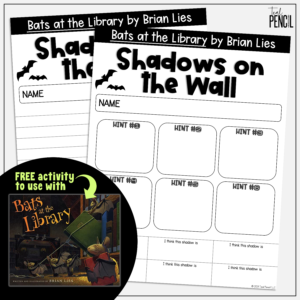About Making Inferences: Making inferences is a critical skill that, as teachers, we cannot “overdo.” When students make inferences, they are required to combine their existing knowledge with any new knowledge or clues in order to create a new understanding of something.
About Using Art in Reading Instruction: There is one truth that prevailed year after year in my classroom—elementary students love art. Any time I could incorporate art in a meaningful way in my lessons, they were hooked. So, I was always trying to think of ways to help students practice important skills while giving them an outlet to be creative and share their work.
Using Thematic Topics in Instruction: You’ve probably figured out by now that I am a sucker for all things “thematic.” If there is a season, holiday, tradition, or concept through which I can anchor learning, I’m all in … and so are my students! Beginning in September, I plan several lessons and activities around fall things: leaves, apples, bats, spiders, etc. (Check out my store for some great thematic fall reading units.) I have created a freebie that combines three of my favorite things: teaching inferring, incorporating art, and structuring everything around one of my favorite fall themes—bats!

Bats at the Library: This activity is a play on what happens in the book Bats at the Library by Brian Lies. In this book, bats sneak into a library at night and proceed to do all kinds of batty things. One thing they do is make shadows on the wall. This activity asks students to make their own “shadows,” and then decide what they think it represents. They provide hints to their classmates who then try to infer what the shadow represents. The best part … these make really fun bulletin boards or displays in the month of October! (Check out my store to see my full, thematic unit for Bats at the Library by Brian Lies.)
How to use This Product: There are many different approaches you could take, but here is an explanation for how I have used this activity in the past.
1)Create a Shadow: Students use a piece of paper and black paint to create a “shadow.” First, they apply black or gray paint to half the page, then they fold the page to create a symmetrical shape. You can take the opportunity to discuss symmetry and have each student decide if their shadow turned out symmetrical or not.
2)Decide What the Shape Represents: Students should take time to study their shape and use their imagination to think of what could be casting the shadow.
3)Write About It: Students write about their shape. There are two options for this: 1) Students write six hints about what is making the shadow and allow others to make inferences about what it is based on the clues, or
2) Students write a short story about what is causing the shadow without giving it away. Then their classmates make inferences to figure out what it is.
How to use This Product: There are many different approaches you could take, but here is an explanation for how I have used this activity in the past.
- Create a Shadow: Students use a piece of paper and black paint to create a “shadow.” First, they apply black or gray paint to half the page, then they fold the page to create a symmetrical shape. You can take the opportunity to discuss symmetry and have each student decide if their shadow turned out symmetrical or not.
- Decide What the Shape Represents: Students should take time to study their shape and use their imagination to think oof what could be casting the shadow.
- Write About It: Students write about their shape. There are two options for this: 1) Students write six hints about what is making the shadow and allow others to make inferences about what it is based on the clues, or Students write a short story about what is causing the shadow without giving away what it is. Their classmates make inferences to figure out what it is.
![]()


